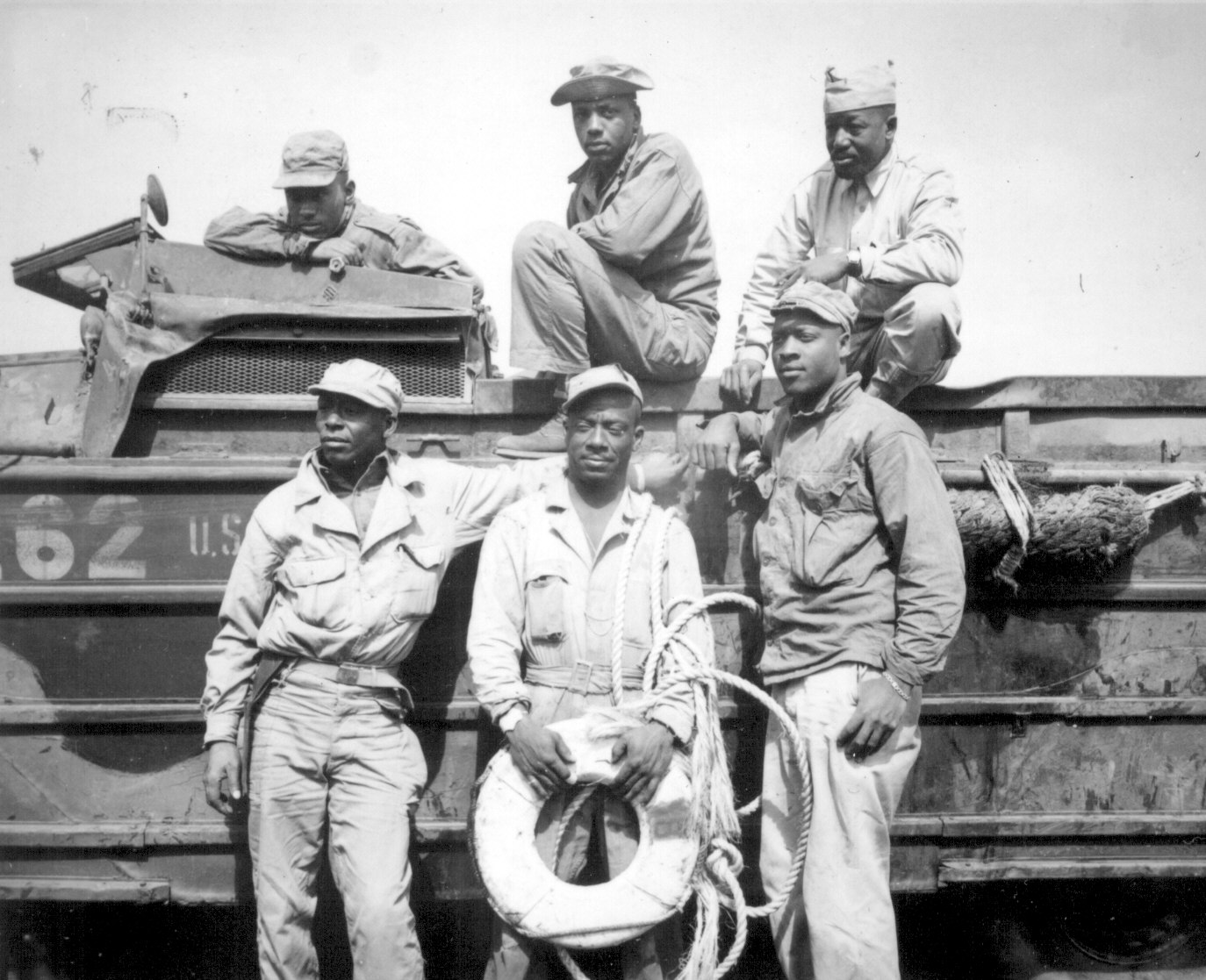American Perspectives: The Remembered & Forgotten
Star-Spangled Ascent
The Picture to Define a War
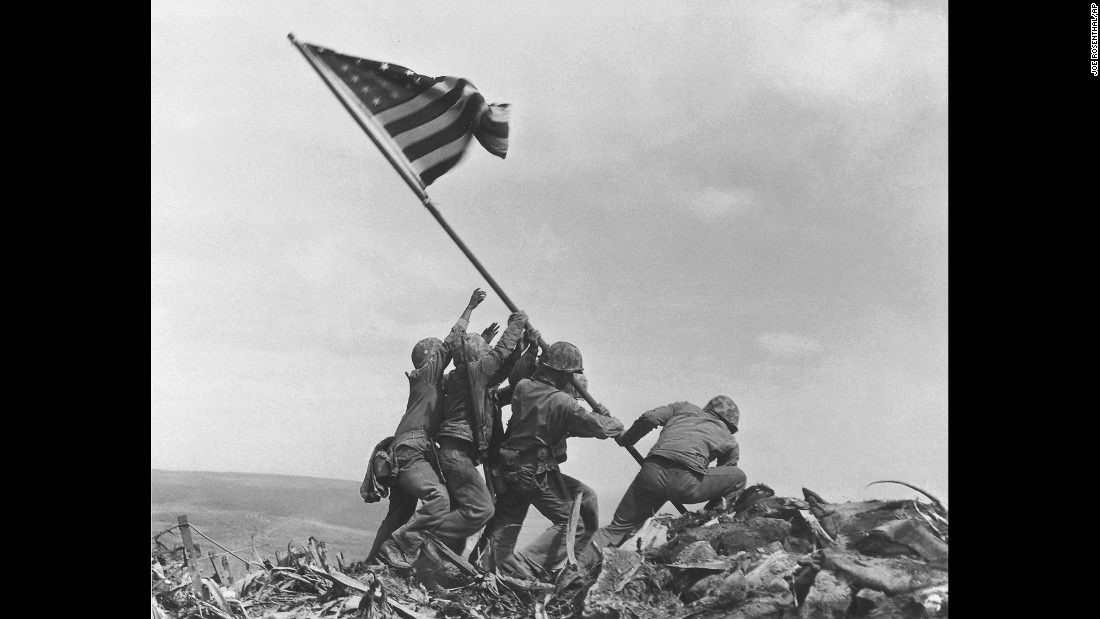
Six Marines raise an American flag on Mt. Suribachi. Joe Rosenthal, a photographer with the Associated Press takes the photograph.
Source
Rosenthal, Joe. Second Flag Raising. In U.S. National Park Service: Battle of Iwo Jima. https://www.nps.gov/media/photo/gallery.htm?id=B6F61492-1DD8-B71C-07996D03A2455964.
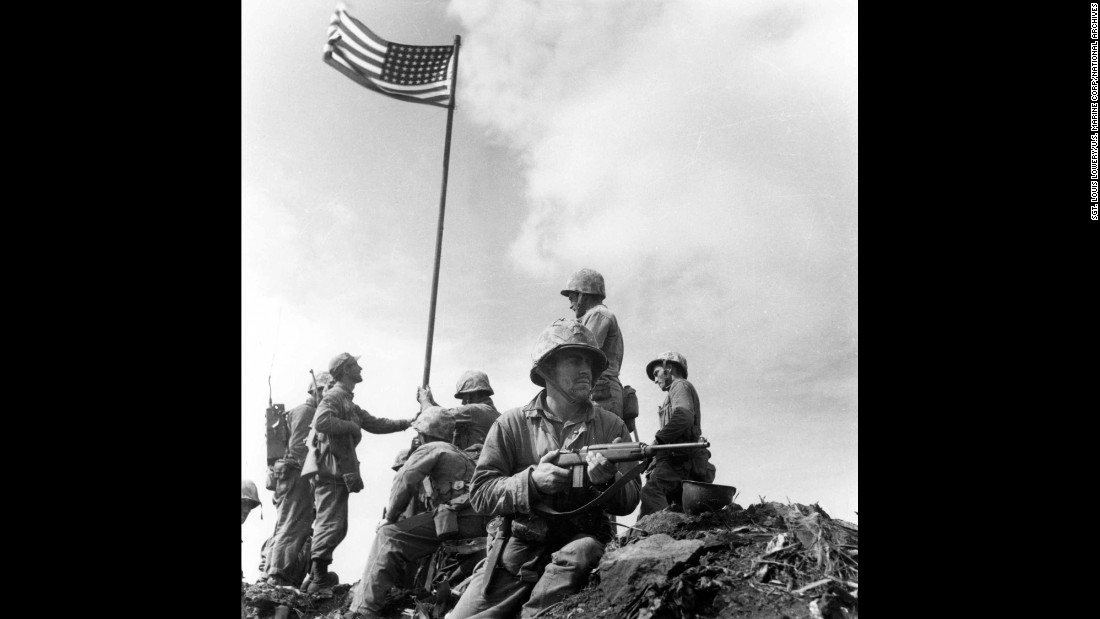
Sgt. Louis Lowery, United States Marine Corps Photographer took this photo 17 minutes before Joe Rosethal's
Source
Lowery, Louis R. Iwo Jima Operation, February - March 1945. December 31, 2006. Accessed June 1, 2017. https://www.ibiblio.org/hyperwar/OnlineLibrary/photos/events/wwii-pac/iwojima/iwojima.htm.
The iconic "flag rasing" photograph was taken by Associated Press journalist Joe Rosenthal on the summit of Mt. Suribachi on Iwo Jima on Februrary 23, 1945.
It was raised on the 5th day of fighting and implied the U.S was victorious; Iwo Jima took 36-days to conquer.
Also, this was the second flag to be raised. The first was deemed too small by the military elites and ordered replaced.
Source
Bradley, James, Ron Powers, and Michael French. Flags of Our fathers: Heroes of Iwo Jima. New York, NY: Bantam, 2006.
To the left is an image of the lesser-known first flag raised on Iwo Jima. It was hastily constructed with a pipe, and was soon replaced by a larger flag. Sgt. Louis Lowery held a long-time grudge against Rosenthal. He claimed that Rosenthal staged the photoand lied about it. Lowery was offended that the common public believed that Rosenthal's picture was of the first flag. However, at the time, as now, Rosenthal's photo appealed to the public much more than Lowery's.
Source
Lowery, Louis R. Iwo Jima Operation, February - March 1945. December 31, 2006. Accessed June 1, 2017. https://www.ibiblio.org/hyperwar/OnlineLibrary/photos/events/wwii-pac/iwojima/iwojima.htm.
Who Raised the Flag?
Contradictions in Memory
Above is the trailer for Clint Eastwood's dramatization of the events of Iwo Jima from the perspective of the 6 Marine's who raised the flag.
Source
Eastwood, Clint. YouTube. April 19, 2012. Accessed June 04, 2017. https://www.youtube.com/watch?v=fx8PnTqQT1k.
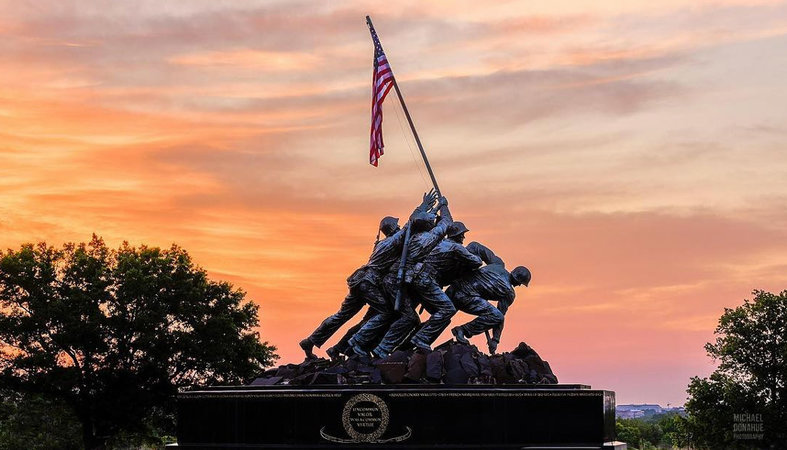
The Marine Corps War Memorial located at the Arlignton Cementary in Virgina is dedicated to all Marines in all United States conflicts that fall or fell in battle. The statue is a larger-than-life metal reproduction of Joe Rosenthal's famous photograph. The irony of the memorial lies in the failure for popular memory to acknowledge the African-American Marines that served on Iwo Jima.
Source
"Visiting the Marine Corps War Memorial." Washington.org. May 18, 2017. Accessed June 09, 2017. https://washington.org/DC-guide-to/marine-corps-war-memorial.photo by @michealdphotos
In the year 2000 the book "Flags of Our Fathers" was published. In it the author, James Bradely, asserted that his father John Bradley was one of the six Marines to raise the flag on Iwo Jima. At the time of publication, it was believed that Bradley was in fact one of the 6 Marines; however, this fact, that was even supported by the Marnie Corps, has since been shown to be false.
Despite this, Bradley's book served as the basis for the 2006 Clint Eastwood movie, "Flags of Our Fathers."
A major concern with the movie was and is the lack of African-Americans during the battle scenes on Iwo Jima specifally, and the majority of the movie broadly. Spike Lee, an African-American movie director, stated in 2008 that "Clint Eastwood made two films about Iwo Jima that ran for more than four hours total, and there was not one Negro actor on the screen" adding that "[i]n his version of Iwo Jima, Negro soldiers did not exist."
Lee's claim highlights the fact that the 600-700 African-American Marines that took part in the 32-day campaign on Iwo Jima are largley forgottn in popular memory. He objected to the movie furter promoting this false memory.
Sources
Bradley, James, Ron Powers, and Michael French. Flags of Our fathers: Heroes of Iwo Jima. New York, NY: Bantam, 2006.
Altman, Alex. "Were African-Americans at Iwo Jima?" Time. June 09, 2008. Accessed May 20, 2017. https://content.time.com/time/nation/article/0,8599,1812972,00.html.
The Auxilary Forces
A Story of Segregated Heroes
Executive Order 8802 and the Selecitve Training and Service Act enabled 2.5 million African-Americans to sign up for military serice; 1 million of those would enter the military.
These 1 million African-Americans served in segregated units and were typcially not allowed to serve in combat roles.
These segregated units instead held up supply lines, transported soliders to and from strategic locations, loaded weapons, and carted the injured. Much of this was accomplished with a DUKW, an semi-amphibious vehicle.
Source
Willie, Clarence E. African American Voices from Iwo Jima: Personal Accounts of the battle. Jefferson, NC: McFarland, 2010. pgs 39-50.
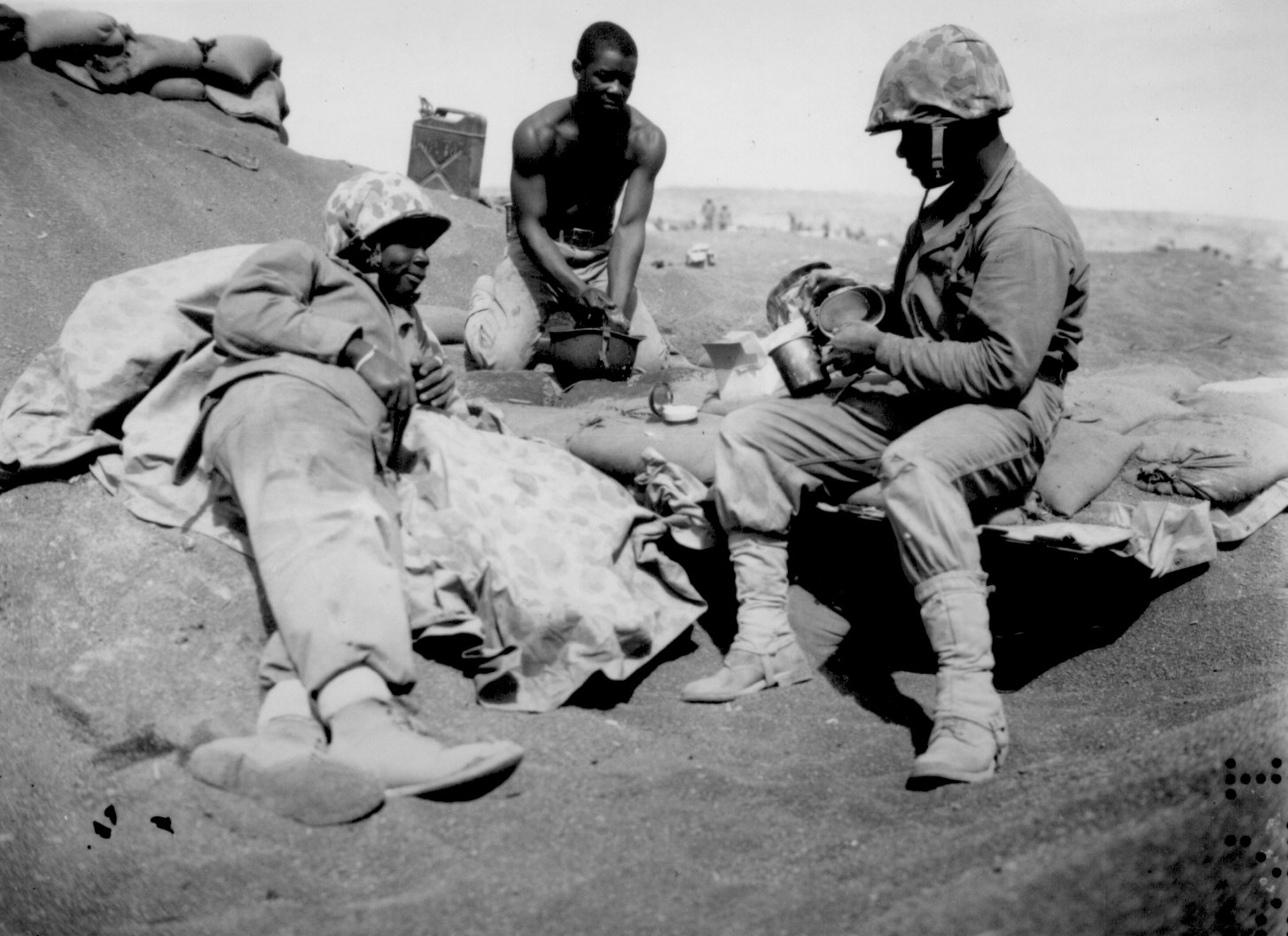
Three Marines rest on Iwo Jima's volcanic ash.
Source
Jones, C. 127-N-11383. March 1945. Pictures of African Americans During World War II , National Archives. In National Archives. https://www.archives.gov/research/african-americans/ww2-pictures.
One Marine, Arthur Peterson, remembers that all the Marines "were together during the fight...[and] were all in it together and race just was not an issue."
Sam Greene recalls his experience on Iwo Jima:
- "We did lose a few of our DUKWs and a couple of our boys. The rest of us who survived it all were very lucky because every time we made a trip during the battle, going or coming, we, too, were driving directly into enemy fire. I quickly realized the meaning of the phrase 'war is hell,'-- believe me it is. Seeing men in the water becuase their landing craft could not get onto the beach, continuosluly hearing all kinds of directions and orders coming from the loudspeakers on the ships: 'move out,' 'get that truck out of here,' and so on are sights and sounds I do not like to remember."

Two African-American Marines carry an injured Japanese Solider.
Source
Fox, Don. 127-N-110622. February 23, 1945. Pictures of African Americans During World War II , National Archives. In National Archives. https://www.archives.gov/research/african-americans/ww2-pictures.
Back Home
A Hero's Welcome?
- "Black people still had to sit in the back of theaters, we could not go into the cafes down in the center of town...that did not help my attitude any at all. I could not understand having to go to war, put my life on the line, come home to this kind of treatment and not have the rights and privileges of a full citizen." 132
Source
Willie, Clarence E. African American Voices from Iwo Jima: Personal Accounts of the battle. Jefferson, NC: McFarland, 2010, pg 132.

